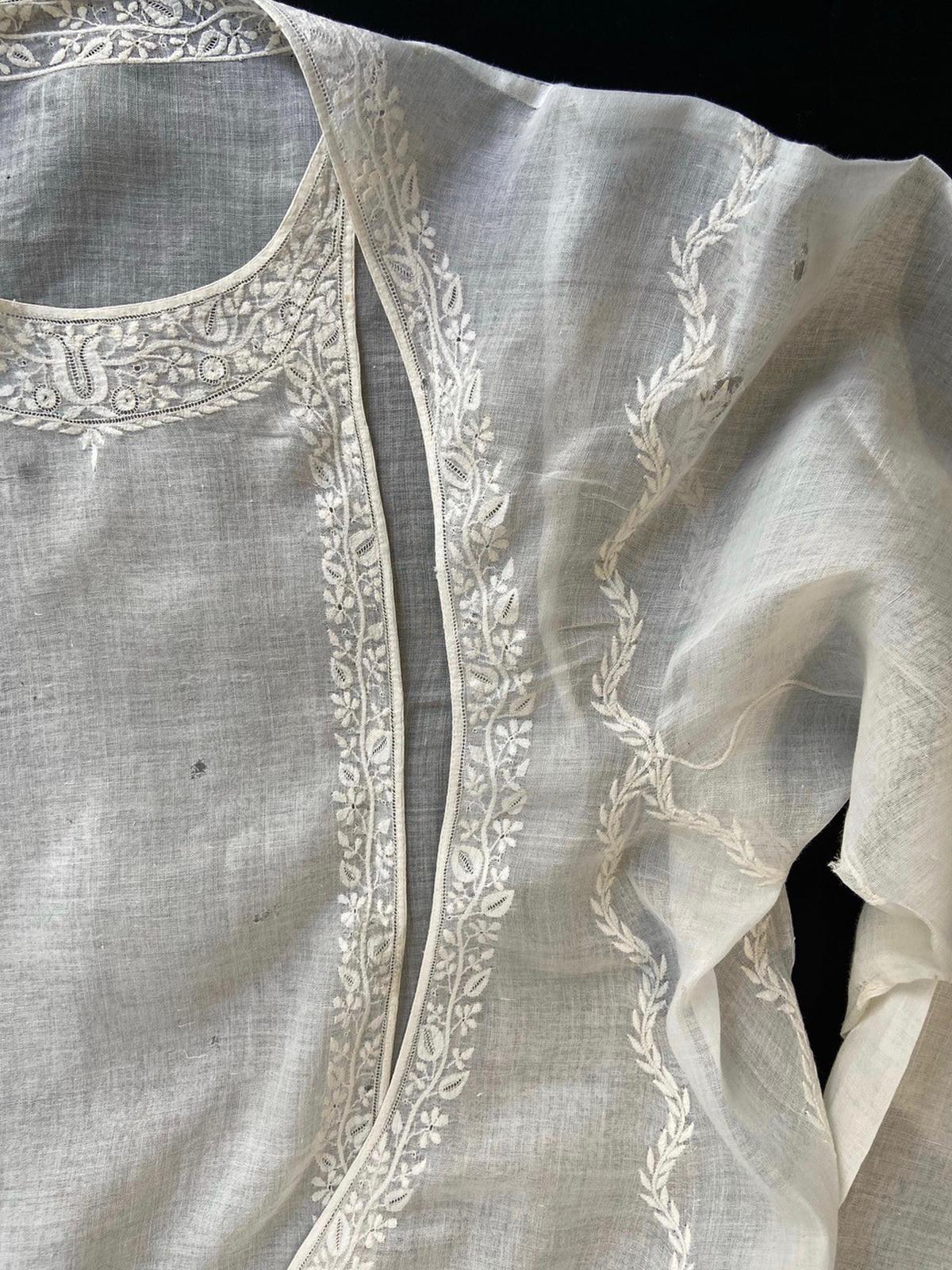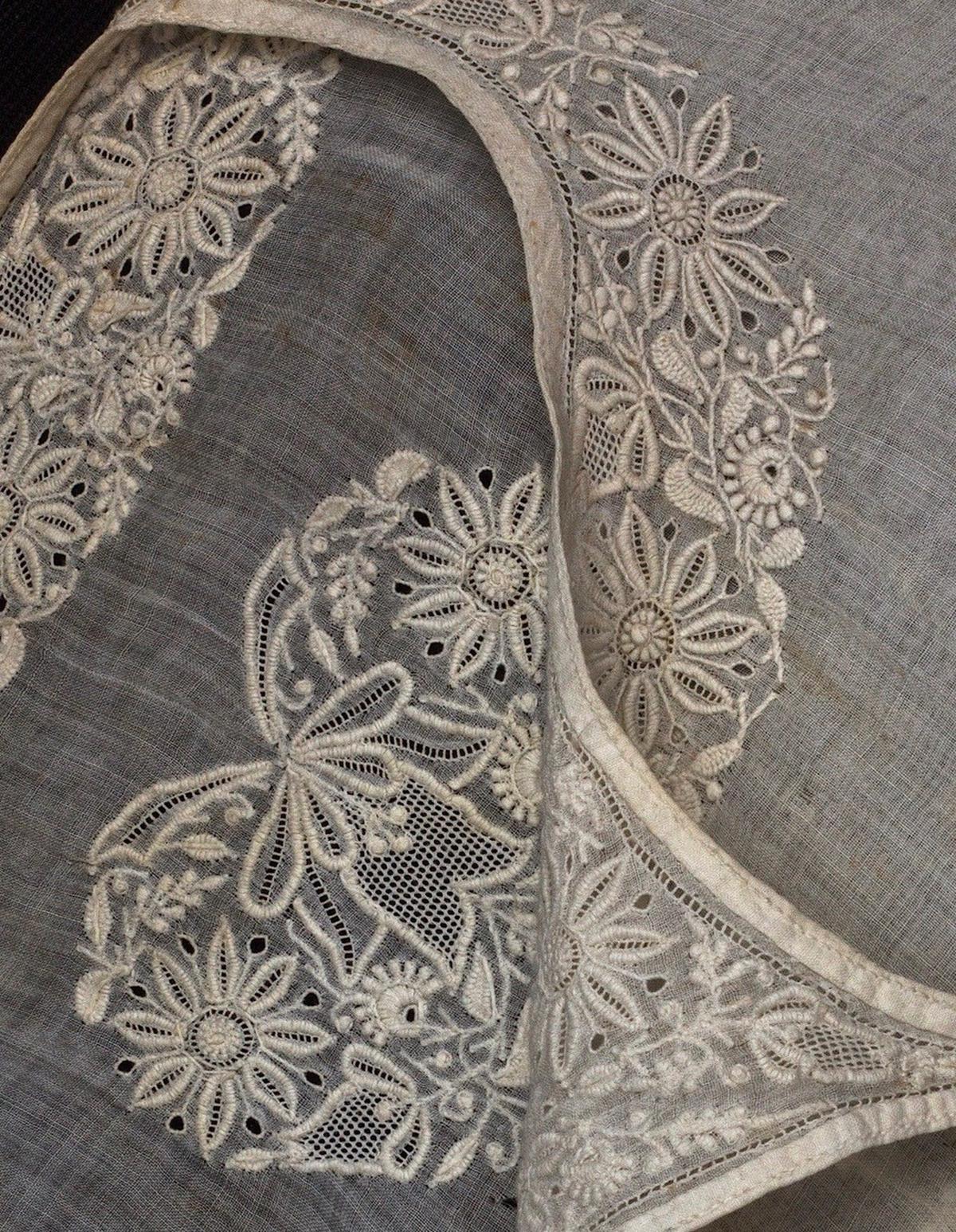
Paola Manfredi
| Photo Credit: Special Arrangement
Chikankari’s origins remain mysterious, even though the embroidery is synonymous with the city of Lucknow. The delicate (mostly white) embroidery (on mostly white fabric) draws up images of elite Awadh, where garments adorned by noblemen carry with them a sense of prestige. Ethnologist Paola Manfredi would argue however, that the origins of this embroidery are ‘largely conjectural’ or have ‘romanticised narratives’.
Paola came to India in the 1980s to work in textile export, and became acquainted with chikankari after working with artisans in Lucknow. Since then, she has documented the history of the work which culminated in her 2017 book Chikankari: A Lucknawi Tradition.

Angarkha, detail. Raja Muhammed Jamal Rasul Khan of Jahangirabad Collection, Lucknow
| Photo Credit:
Special Arrangement
Seated on a sofa with a light yellow chikankari fabric laid out on it and wearing a white chikankari dupatta, Paola was in the city to give a presentation on Textiles of Awadh: Chikankari, Muslin, Jamdani in Apparao Galleries in Nungambakkam. The talk, in association with the Crafts Council of India, was in honour of 25 years of the Prakriti Foundation.
The ethnologist says she has found mentions of white embroidery on muslin fabric as early as in Megasthenes’ accounts of the court of Chandragupta Maurya. She mentions two narratives that are broadly understood as the origins of the chikankari.
The first, and the one most popular in Lucknow, finds Persian origins and royal lineages. Paola tells us the story of chikankari coming to Awadh through a mysterious traveller. The word ‘chikan’ comes from Persian and was the general trade name for white embroidery on white fabric, and she shows a collection of miniature paintings depicting royalty in translucent white muslin clothing with white embroidery which can be interpreted as chikan.

Kurta detail. Weavers Studio Resource Center (WSRC), Kolkata
| Photo Credit:
Special arrangement
The second narrative for the origin suggests that chikankari was born out of the creation of a less expensive version of the jamdani weave of Bengal. Dhaka was the textile hub with embroidery being practised extensively before the court of the Nawab of Awadh became the centre of art patronage. Artisans and weavers moved to Awadh, working under the court of Lucknow. “Chikankari from Lucknow was considered a garment of distinction by the Indian elite across the country, not just Awadh,” says Paola.
She says that she has found most samples of chikan work across history are of men’s clothing, with a few exceptions.
Chikankari was incorporated into the dress of the lower court of Awadh till the 1930s when it was replaced by the English costume. “When the elite-ness of it died, men became traders and women joined the craft.” Paola shows samples of jamdani work produced by Ali Ahmed of Faizabad in 1958, whom she describes as the ‘last jamdani weaver of Faizabad’.
She is looking to find Ahmed’s descendants to see if the weave can be revived. In Lucknow, SEWA (Self-Employed Women’s Association) is trying to revive authentic chikankari by getting the weavers to address the market directly





